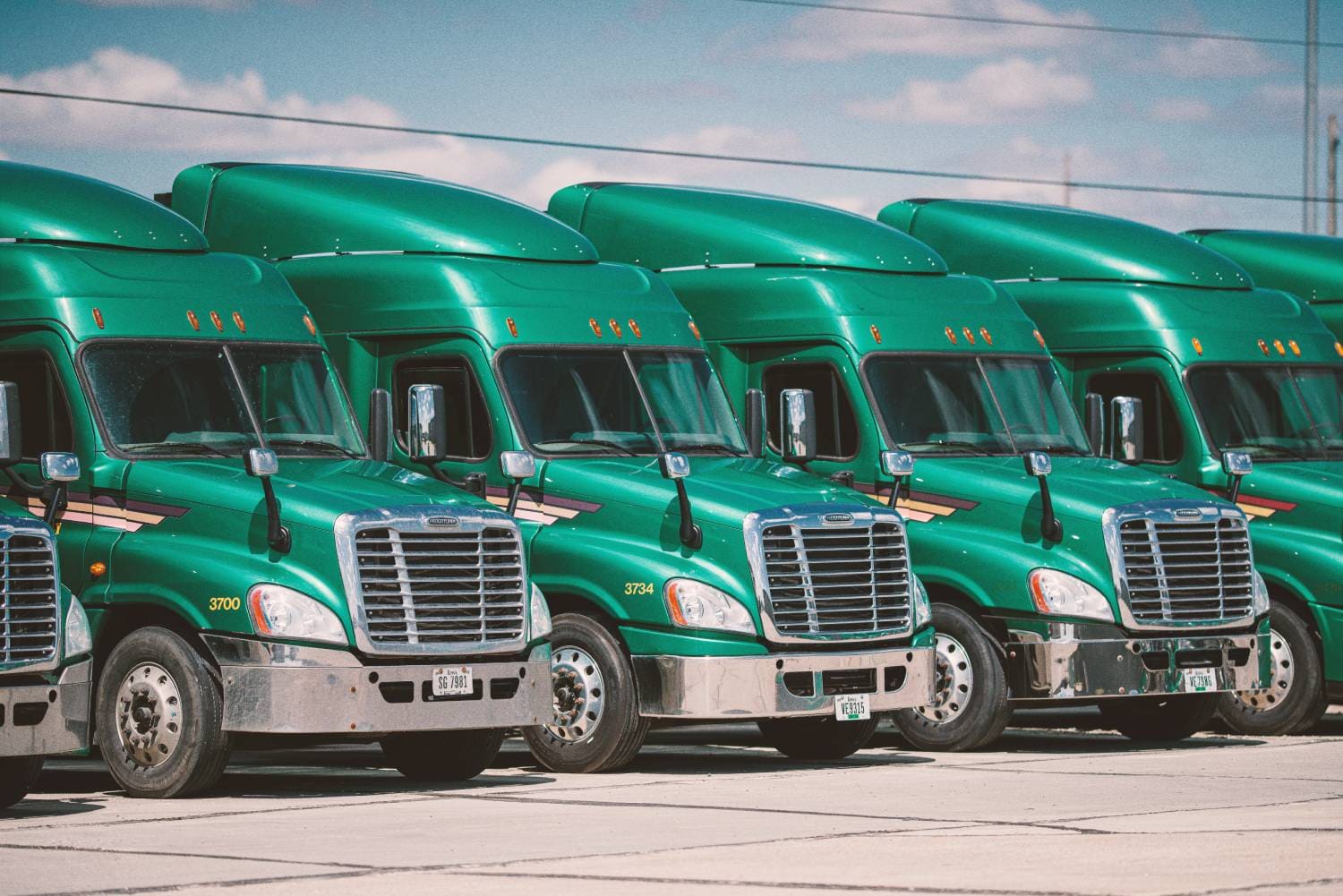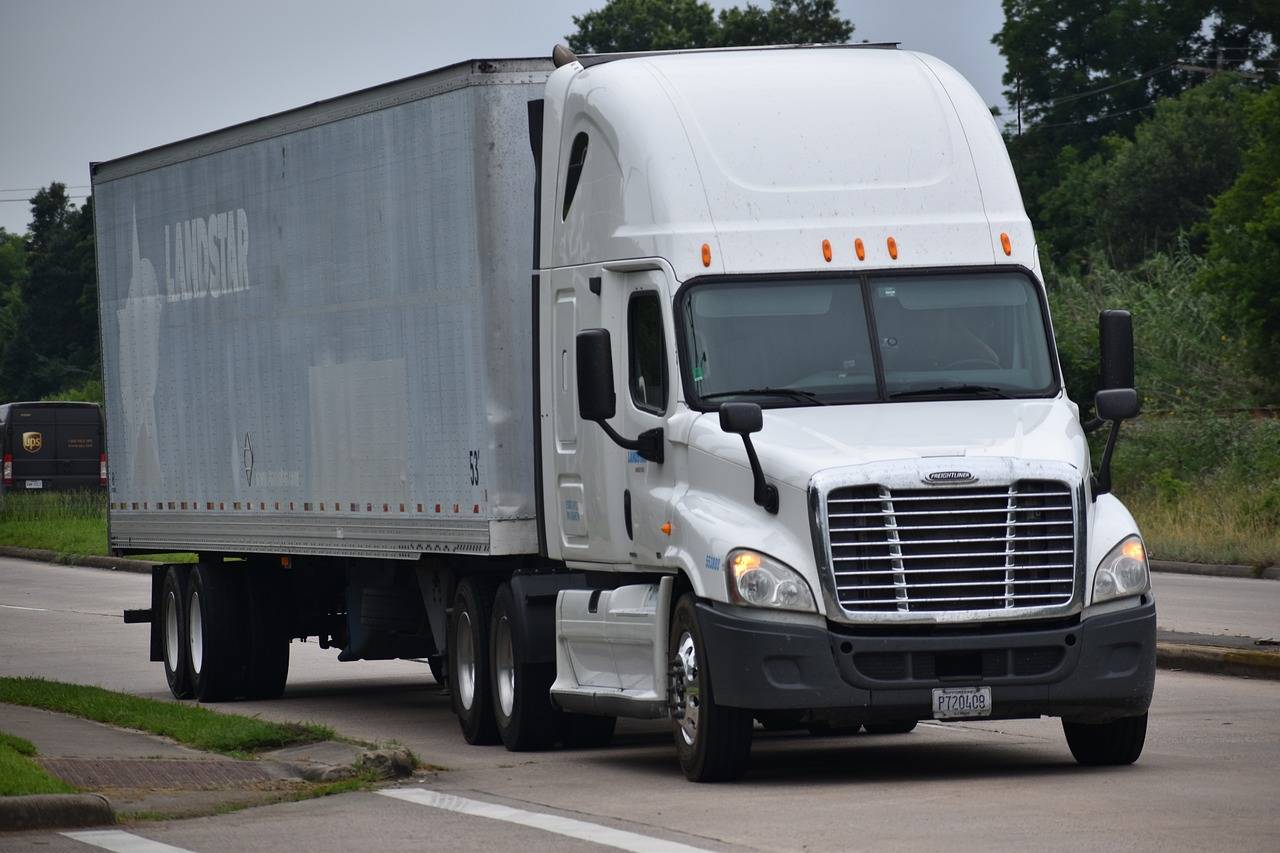DOT Hours of Service Rules & Regulations for Truck Drivers: A Complete Guide for 2024
The Federal Motor Carrier Safety Administration (FMCSA), a division of the Department of Transportation (DOT), is dedicated to maintaining a safe and efficient transportation system across the United States. As part of its regulation of commercial vehicles, FMCSA and the DOT have established safety standards that govern the number of hours commercial truck drivers can drive as well as mandatory breaks for drivers.
One such safety standard, known as hours of service, is essential for all truck drivers operating in the United States to follow. However, these regulations can get complicated, so it’s important to stay up to date on changes and understand how they apply to truck drivers.
What Are the DOT Hours of Service Rules?
The DOT hours of service rules regulate the amount of time truck drivers can be behind the wheel, providing daily and weekly limits drivers must follow. They also define mandatory rest breaks and require drivers to use electronic logging devices (ELDs) to track on- and off-duty status as well as driving hours.
What Is the Purpose of Hours of Service Regulations?
Hours of service regulations are critical to the safety of both truck drivers and others on the road.
Driver fatigue can potentially lead to serious accidents and collisions. The DOT hours of service rules are designed to ensure drivers are awake, alert, and well-rested when on the road, helping to maintain safe driving conditions for all.
Who Do the Hours of Service Rules Apply to?
Anyone who operates a commercial motor vehicle (CMV) in the United States must follow DOT hours of service rules—even international carriers must adhere to these regulations when driving within the states.
According to the DOT, a CMV is any vehicle that meets one of the following conditions:
- Has a gross vehicle weight of over 10,0001 pounds (with or without a load)
- Transports hazardous materials in a quantity that requires a placard
- Is designed or used to transport 16+ passengers (including the driver) not for compensation or 9+ passengers (including the driver) for compensation
If any of the conditions are met, the vehicle is considered a CMV and hours of service rules may apply (with some exceptions).
When Do the Hours of Service Regulations Apply?
Whether hours of service regulations apply depends in part on whether the trip or company involves intrastate or interstate commerce.
Intrastate commerce takes place within a single state and does not cross state borders. Commercial truck drivers engaging in intrastate commerce are not required to follow DOT hours of service regulations, although states have their own guidelines that must be adhered to.
Interstate commerce, which involves crossing state lines, is a different situation. All interstate truck drivers must follow DOT hours of service rules. However, keep in mind that you or your truck do not have to personally cross state borders to fall under the interstate commerce category; if you are involved with interstate commerce part time or if the company you are driving for engages in interstate commerce, you must follow the hours of service rules.
If you are transporting hazardous materials in quantities that require a placard, then you must follow DOT hours of service regulations—regardless of intrastate or interstate commerce rules.
DOT Regulations for Truck Drivers: Hours of Service Overview
While you should always check the official FMCSA hours of service website to ensure you are staying in compliance with DOT regulations, the following overview provides an up-to-date (as of 2024) summary of the rules commercial truck drivers must follow.
11-Hour Driving Limit
Within a 14-hour shift, truck drivers can drive a maximum of 11 hours. These hours do not have to be consecutive, but you cannot go over 11 total active driving hours within the 14-hour window. After 11 hours of driving time, you must have at least 10 consecutive hours off-duty before going on-duty again.
14-Hour Driving Window/Shift Limit
The 14-hour shift limit mandates that truck drivers may not drive beyond the 14th consecutive on-duty hour and that they must have a minimum off-duty break of 10 consecutive hours after reaching the 14th hour. In other words, once 14 hours have elapsed since your last 10-hour break, you cannot drive again until you have another 10-hour off-duty break.
30-Minute Driving Break
After driving for eight cumulative hours, truck drivers must take a 30-minute driving break. However, this break does not have to be off-duty; it can also be fulfilled with any on-duty non-driving tasks.
60/70-Hour Weekly Limit
Truck drivers cannot drive after completing 60/70 hours on duty in 7/8 consecutive days. The 7/8-day time period can be restarted after taking 34 consecutive hours off-duty. After a 34-hour restart, drivers can drive again within daily limits until reaching the 60/70-hour limit again.
Sleeper Berth Provision
The sleeper berth provision allows for some flexibility in the daily driving limit, specifically regarding the mandatory 10-hour off-duty break. Truck drivers can split the 10-hour break period into two or more off-duty shifts, as long as one period is at least two hours long (whether in the sleeper berth or not) and the other is at least seven consecutive hours in the sleeper berth.
Regardless of how the time is split, the off-duty breaks must add up to at least 10 hours.
What Is Considered On-Duty Time for Truck Drivers?
The term “on-duty” is a term used to describe the hours a commercial truck driver works in some capacity. On-duty time includes all time spent on driving, attending the truck, loading/unloading, inspecting the truck, repairing the truck, completing shipment paperwork, undergoing drug and alcohol tests, doing other paid work for the trucking company or carrier, or doing paid work for another employer.
Additionally, on-duty time includes all time spent in the CMV except when the driver is resting in a parked vehicle or sleeper berth or riding as a passenger of a CMV.
Exceptions to the DOT Hours of Service Rules
In some situations, there are exceptions or exemptions to the DOT hours of service rules.
Short-Haul Exception
Short-haul commercial truck drivers, in certain circumstances, may be able to extend their 14-hour driving window by a maximum of two hours. To qualify, you must be operating within a 150 air-mile radius of the starting location, start and end your day at the same location, and complete your workday within the 14-hour driving window.
Adverse Driving Conditions Exception
Adverse weather or other dangerous driving conditions can impact a truck driver’s ability to follow typical hours of service requirements. If you encounter adverse conditions that you did not know about before starting the trip and could not have predicted through basic common sense or planning, you may be able to extend the 11-hour driving limit or 14-hour driving window by a maximum of two hours
Emergency Conditions Exception
Some or all of the hours of service rules may be suspended temporarily if an official state or national state of emergency is declared.
Penalties for Violating Hours of Service Rules
If a truck driver or logistics business does not comply with hours of service rules, the DOT and FMCSA will carry out strict penalties. These penalties can apply to both the driver and the trucking company and may include forced shutdowns until drivers meet rest or time-off requirements, substantial fines, or—depending on the severity of the violation—even punitive measures. Additionally, local or state officials may impose other fines for violations occurring in the region.
How to Stay Compliant with the DOT Hours of Service Regulations
Follow these tips to help stay in compliance with the DOT hours of service rules:
- Track on-duty and off-duty times
- Accurately log driving time and status in your ELD
- Try to arrive early to destinations when possible
- Plan your trip before taking off, including the routes you will take and where you will stop for breaks
- Check the weather along your planned route
- Combine stops when possible
It’s also critically important to stay up to date on hours of service regulations. Visit the FMCSA website to see updates, access new tools, and learn more about rules for truck drivers.
Join the Driving Team at BT Trucking
At BT Trucking, we are proud to serve the transportation community. Our family-owned business has been a leader in providing transportation logistics solutions to our customers since 1988. Mile after mile, we provide stability to and build long-term relationships with customers, vendors, and drivers across the Midwest and Southwest regions.
If you are interested in owning your own truck or applying to work as a driver, we can help. Our lease purchase program will start you down the road to success. We are dedicated to the safety of our drivers, and we are determined to provide you with the tools and support you need to succeed.
Complete an application or contact us today to learn more.





Post a comment